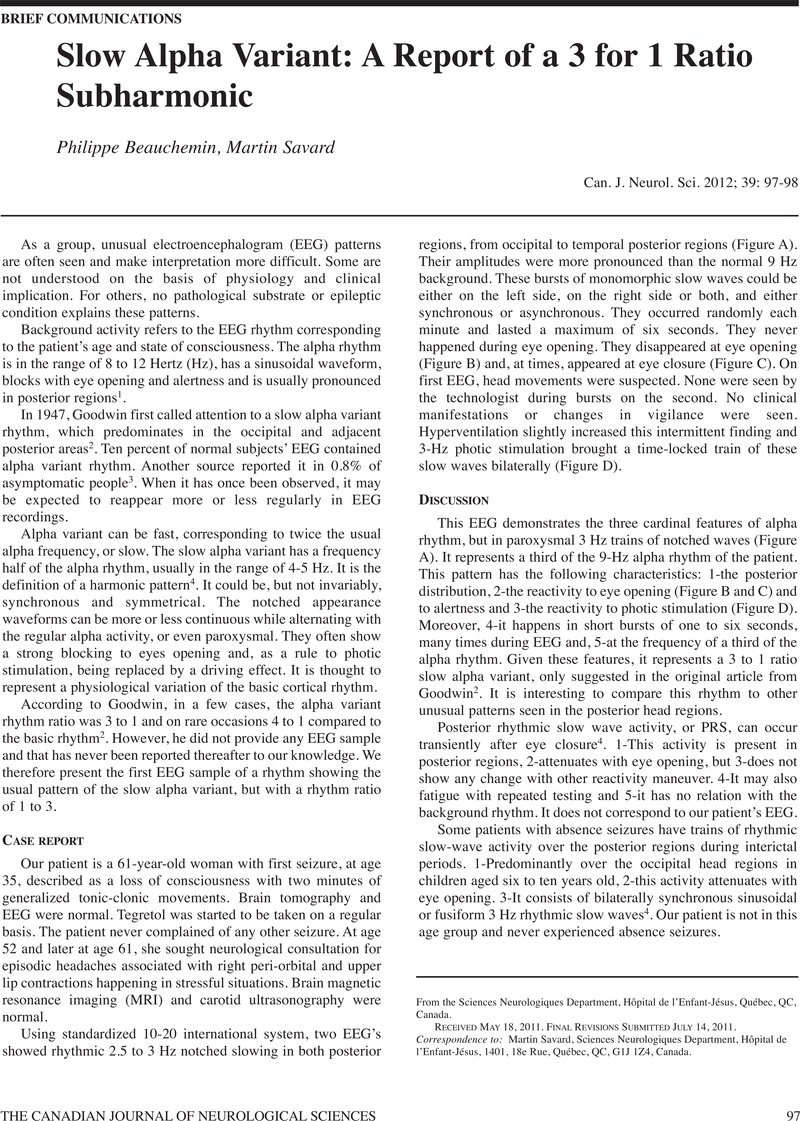Crossref Citations
This article has been cited by the following publications. This list is generated based on data provided by Crossref.
Kaltiainen, Hanna-Leena
Helle, Liisa M.
Renvall, Hanna M.-L.
and
Forss, Nina H.
2016.
Slow-Wave Oscillations in Awake Healthy Subjects: Methodological and Physiological Considerations.
Journal of Clinical Neurophysiology,
Vol. 33,
Issue. 4,
p.
367.
Kaltiainen, Hanna
Helle, Liisa
Liljeström, Mia
Renvall, Hanna
and
Forss, Nina
2018.
Theta-Band Oscillations as an Indicator of Mild Traumatic Brain Injury.
Brain Topography,
Vol. 31,
Issue. 6,
p.
1037.
Lee, Seolah
and
Lee, Sang Kun
2021.
A Rare Case of 3:1 Alpha Variant.
Journal of Epilepsy Research,
Vol. 11,
Issue. 2,
p.
154.
Amin, Ushtar
Nascimento, Fábio A.
Karakis, Ioannis
Schomer, Donald
and
Benbadis, Selim R.
2023.
Normal variants and artifacts: Importance in EEG interpretation.
Epileptic Disorders,
Vol. 25,
Issue. 5,
p.
591.



